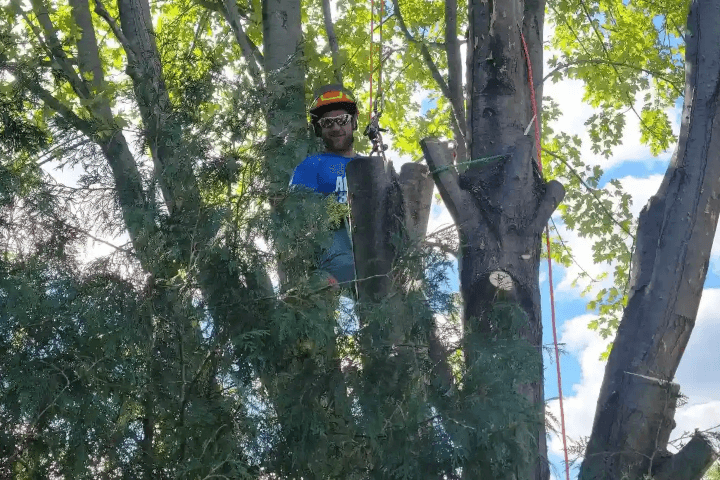Ten 10 Most Popular Tree Varieties Every Arborist Admires
As the guardians of the green spaces, arborists have a crucial role in enhancing the health and beauty of woody plants. Professional tree care experts have an in-depth understanding of tree biology, safety practices, and environmental dynamics, making them invaluable when it comes to overseeing public parks and natural landscapes. Whether it's pruning for aesthetics, ensuring structural safety, or recognizing tree diseases, arborists bring the skill set needed to ensure tree health.
But beyond their skills, arborists usually develop their preferred choices when it comes to tree species. Various trees bring specific benefits and obstacles, and choosing the right ones is crucial for both functional and aesthetic purposes. In this article review the ten best tree species that all arborist appreciates, delving into the reasons why these particular trees are held in high regard and the attention they call for. Whether you are a tree admirer or a landowner wanting to improve your garden, understanding these species can provide important knowledge into selecting the best options for your land.
The Value of Certified Arborists

Hiring a qualified arborist is crucial for ensuring the health and safety of trees. These specialists boast the specific knowledge and training necessary to assess tree health, detect issues, and execute effective solutions. Their skills ensures that trees are nurtured effectively, promoting longevity and vitality, which ultimately benefits homeowners and communities as well.
Qualified arborists understand the intricacies of tree biology and mechanics, allowing them to make educated decisions about pruning, cabling, and other measures. They can identify signs of disease or pest infestations early, lowering potential damage and costs. Moreover, their training equips them with skills to assess tree risk, making them essential for urban environments where trees interact closely with structures and people.
In addition to immediate tree care, certified arborists play a critical role in teaching the public about tree stewardship. https://treeremovalnassauny.com/ support for sustainable practices that support biodiversity and ecosystem health. By choosing to work with a licensed arborist, individuals play a part to a better urban landscape and ensure that their trees receive the best possible care.
Main Points from Certified Arborists
Professional arborists emphasize the importance of comprehending tree biology and the environmental factors that affect tree health. They know that each tree species has specific needs, and recognizing these diversities is crucial for their care. Arborists often stress that proper watering, mulching, and pruning techniques can significantly enhance a tree's growth and longevity. This expertise allows them to tailor their care strategies based on the individual requirements of various tree species, ensuring optimal health.
Another key insight shared by arborists is the importance of regular tree inspections. They recommend that monitoring trees for signs of disease or stress can prevent larger issues down the line. During inspections, arborists look for indicators such as leaf discoloration, unusual growth patterns, or pest infestations. Early detection enables arborists to take proactive measures, whether through intervention or by recommending taking down if the tree poses a risk.
Lastly, arborists are strong proponents for sustainable practices in tree management. They often highlight the importance of preserving native species and promoting biodiversity in urban environments. By educating property owners about the benefits of planting the right tree in the right location, arborists contribute to healthier ecosystems. Their skills not only helps in the cultivation of trees but also informs the community on the broader impacts of tree care on wildlife and the environment.
Essential Tree Care Methods and Tools
Arborists rely on a range of essential techniques and instruments to ensure the well-being and safety of trees. One important method is regular tree inspections, which allow arborists to detect potential issues such as illness, pest infestations, and structural weaknesses. Armed with a deep understanding of tree biology, they assess tree condition and provide recommendations for care. This forward-thinking approach aids preserve a healthy urban tree cover and prevent dangers that could arise from injured trees.
In addition to evaluations, pruning is a vital method that encourages sustainable growth and boosts the aesthetic value of trees. Arborists use specialized equipment like hand pruners, saws, and safety harnesses to securely access tree limbs while minimizing little damage to the tree. Grasping the correct timing and methodology for trimming is essential, as it encourages new growth and aids in guiding the tree according to its surroundings. Arborists are trained to ascertain the best techniques for each type and context, making their skill essential.
In conclusion, arborists use technology to aid in their work. Tools such as bucket trucks, stump grinders, and chipper machines simplify the process of tree extraction and care. Cutting-edge software is often employed for conducting hazard evaluations and developing management plans. By combining traditional methods with modern technology, arborists improve their capability to nurture trees, ensuring they thrive in both natural and urban environments.